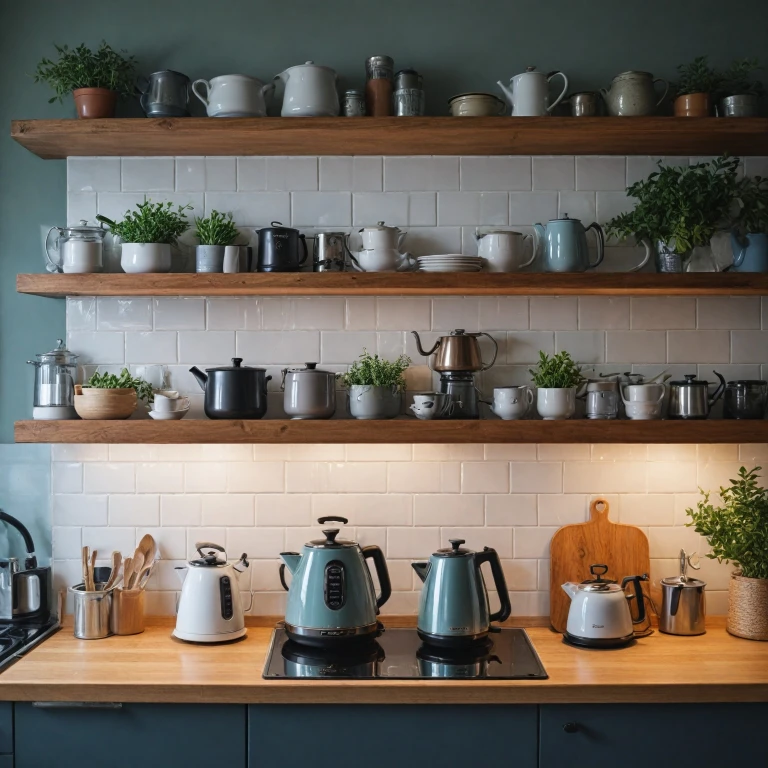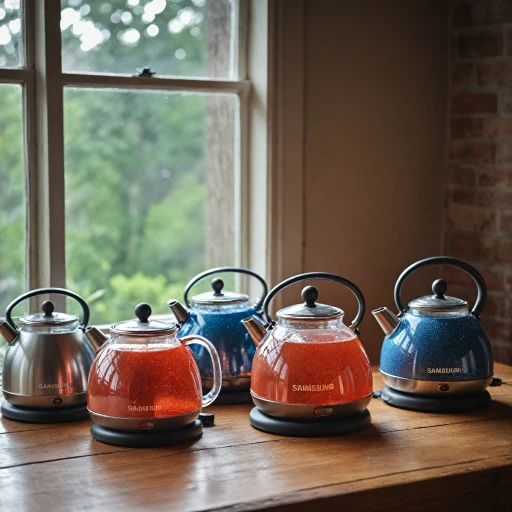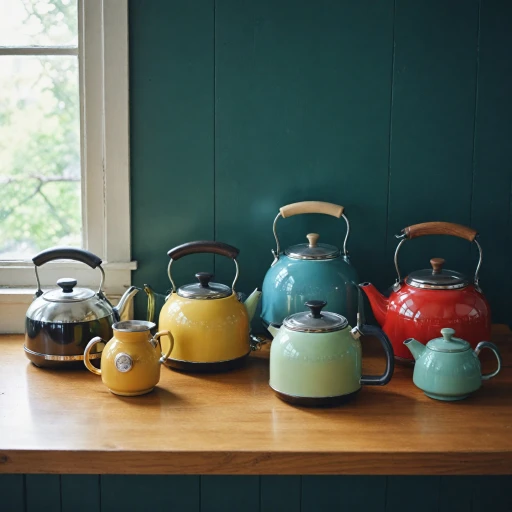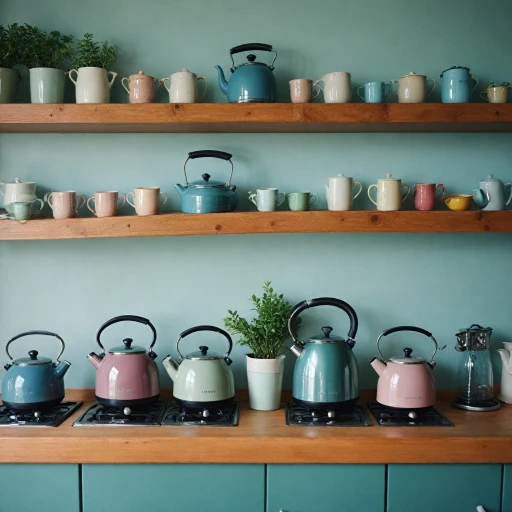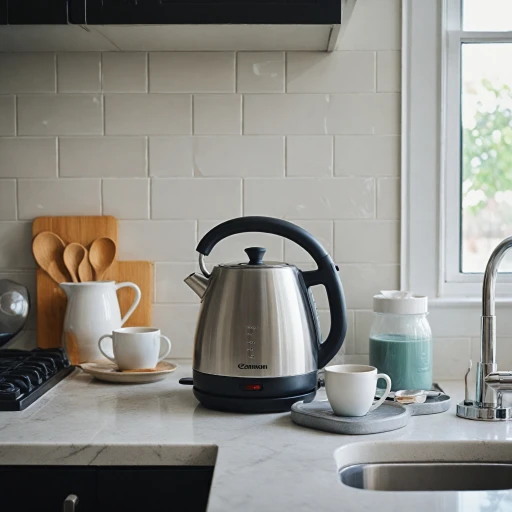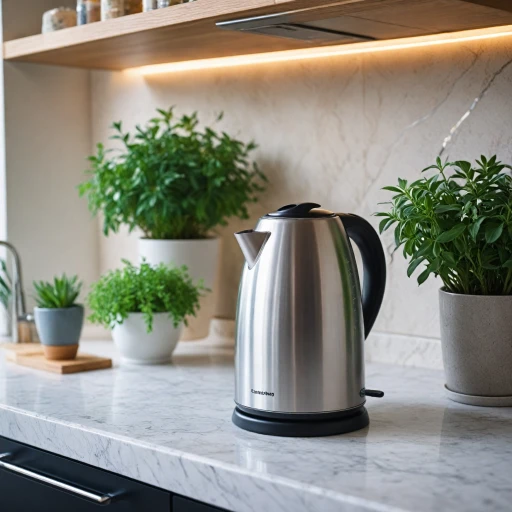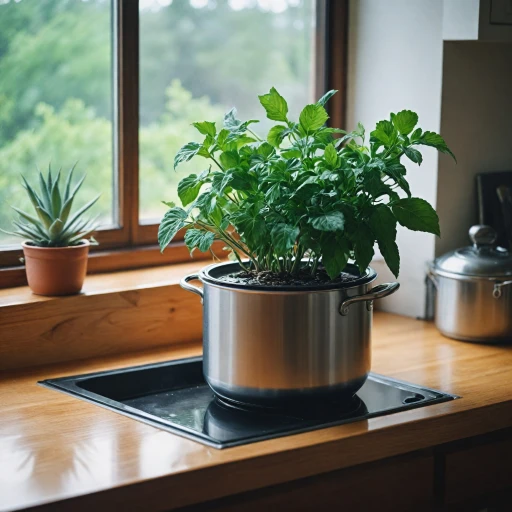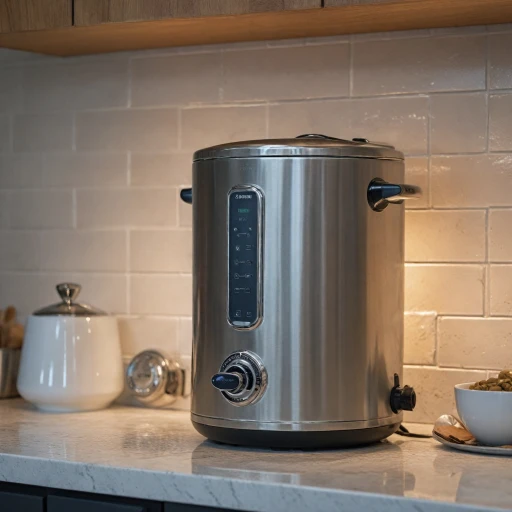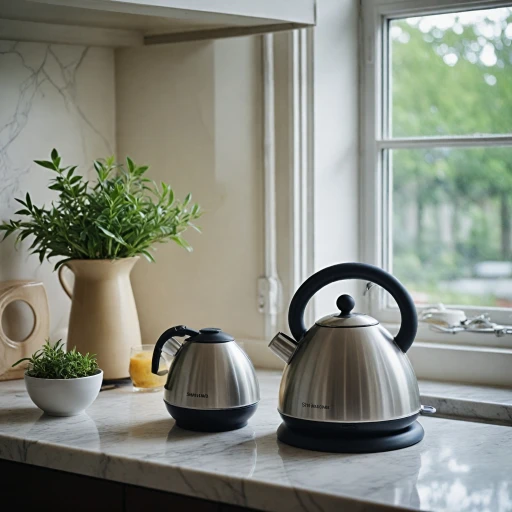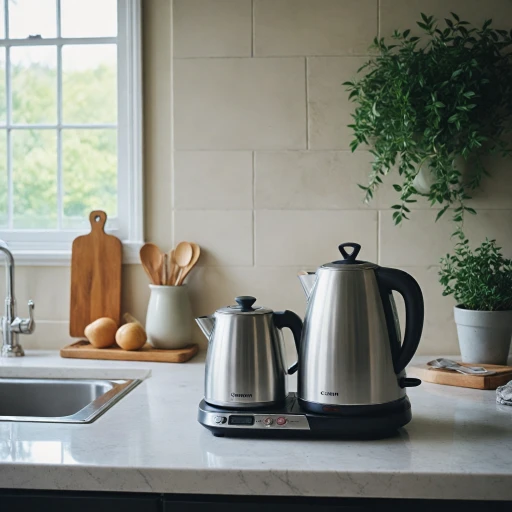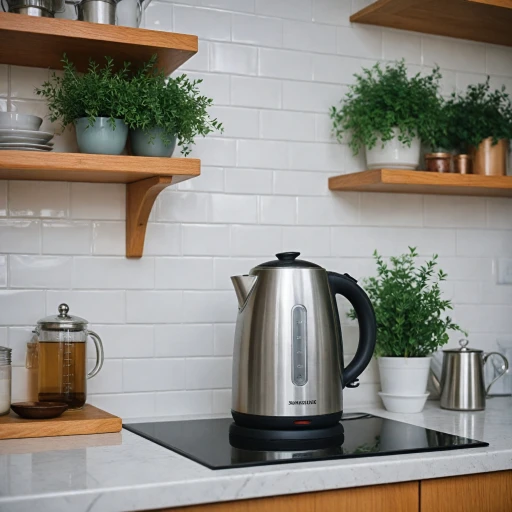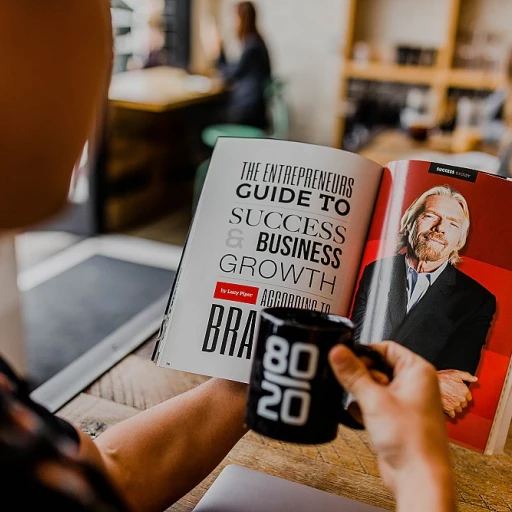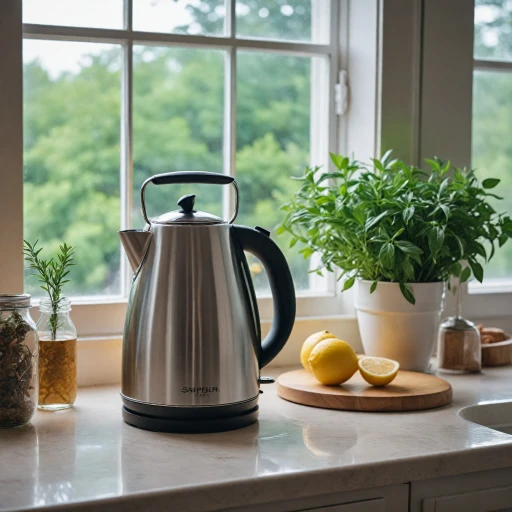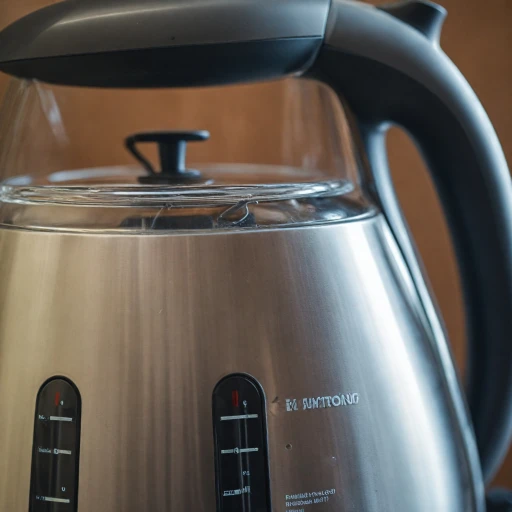
Understanding the Basics of Water Heater Kettles
When it comes to electric kettles, understanding their fundamental properties can significantly impact your decision-making process. These devices are staples in many households, primarily for their efficiency in heating water quickly for tea, coffee, and other hot beverages. The convenience they bring is unmatched, with various models and features tailored to meet diverse needs.
Basic Components and Operation
Electric kettles are designed with components that ensure swift and effective water heating. The primary part is the heating element, which typically sits at the base of the kettle. When switched on, this element warms up rapidly, heating the water inside the kettle. For an in-depth exploration of these components, check out this comprehensive guide on electric pots.
Key Features to Consider
- Temperature Control: Some kettles offer adjustable temperature settings, an essential feature for those who brew different types of tea that require specific temperatures.
- Material: Kettles can be made from stainless steel, glass, or plastic. Each material has its pros and cons, impacting durability, weight, and even the taste of your water.
- Capacity: Available in various sizes, you can choose according to your daily water requirements, from a compact liter capacity to larger pots.
- Design Types: From traditional kettles to more precise gooseneck models, you can select based on your aesthetic preferences and functionality needs, especially if you’re a coffee aficionado who enjoys pour-over coffee.
By familiarizing yourself with these basic features, you're setting yourself up for a more strategic purchase decision. Whether you prioritize efficiency, material quality, or additional features like boil dry protection and automatic shutoff, the right electric kettle can greatly enhance your daily routine.
Energy Efficiency: Saving Power with Your Kettle
Reducing Energy Consumption While Making Your Perfect Cup
When it comes to electric kettles, their energy efficiency can have a significant impact on both your utility bill and environmental footprint. Opting for a kettle that maximizes energy use is crucial, especially if you frequently enjoy a hot cup of tea or coffee.
Firstly, consider the wattage of the kettle. Higher wattage typically means faster boiling time, but it can also lead to increased energy consumption. Balancing a quick boil time with energy efficiency is essential in choosing the best electric kettle for your needs.
- Look for kettles with automatic shutoff and boil dry protection. These features prevent unnecessary power usage by turning the kettle off once the water reaches the boiling point or if it detects there is no water inside.
- Gooseneck kettles, such as the Fellow Stagg or Hamilton Beach models, are designed for precision, allowing you to boil only the amount of water needed, reducing waste and conserving energy.
- Consider stainless steel or matte black finishes for their durability and insulating properties, which help retain heat and efficiency over time.
Another consideration is the kettle's capacity. Larger kettles, while convenient for boiling more water at once, can consume more electricity. If you're typically brewing a single cup of coffee or tea, a small-capacity kettle may be more energy efficient.
Finally, electric kettles on platforms like Amazon offer a wide range of features and price ranges. By weighing these options against your specific needs, you can add cart knowing you're making an informed choice that balances energy consumption with the value of your product.
Safety Features to Look For
Essential Safety Features in Modern Kettles
When purchasing an electric kettle, safety should be a top priority. Modern kettles offer a range of safety features designed to prevent accidents and enhance user experience, making your time in the kitchen hassle-free. These enhancements often come in handy, especially when buying some models which feature automatic shutoff. This important function turns the device off once the water reaches the desired boil, ensuring that you won’t have to worry about forgetting to turn it off.
Another critical safety feature to explore is boil-dry protection. It prevents the kettle from heating when there's no water inside, decreasing the risk of damage to the heating element and extending the life of your kettle. Moreover, safety is integrated with convenience, such as the 'cool touch' exterior which keeps the kettle’s surface safe to handle after boiling water.
Particularly popular among households is the safety lid lock. Essential for preventing accidental spills or burns, it safeguards users while ensuring that the boiling hot water stays inside the kettle. For peace of mind, it's also beneficial to look for kettles with a stable base and non-slip feet, helping prevent accidental tipping or movement.
Whether you are eyeing options available on Amazon with features like stainless steel construction or simple gooseneck models for precision pouring, ensuring these safety features are present can make a decisive difference. For those who like to indulge in a precise brew of coffee or tea, the Fellow Stagg EKG with its matte black finish and variable temperature control is among user-friendly choices combining style and function.
Understanding these features, along with the materials and design discussed earlier, is crucial to making an informed purchase. Especially useful for frequent coffee and tea drinkers, such details can enhance your brewing experience, balancing efficiency, and safety with every use.
Materials Matter: Choosing the Right Build
Material Choices for Your Electric Kettle
When selecting an electric kettle, the material it's made from is a crucial factor that can affect both performance and aesthetics. The most common materials include stainless steel, glass, and plastic, each offering distinct advantages and drawbacks.
Stainless Steel: Durability and Style
Stainless steel is a popular choice for electric kettles due to its durability and sleek appearance. It is resistant to rust and stains, making it a long-lasting option. Many users appreciate the modern look of a stainless steel electric kettle, especially in a matte black finish, which can complement a variety of kitchen styles. Brands like Fellow Stagg offer models that are both functional and stylish, making them a favorite among coffee and tea enthusiasts.
Glass: Aesthetic Appeal and Purity
Glass kettles provide a visual appeal, allowing you to watch the water boil. This can be particularly satisfying for those who enjoy the ritual of making coffee tea. Glass is also a non-reactive material, ensuring that no unwanted flavors leach into your water. However, glass kettles can be more fragile compared to their stainless steel counterparts.
Plastic: Lightweight and Affordable
Plastic kettles are typically lighter and more affordable, making them a practical choice for those on a budget. They often come with cool touch exteriors, which can be a safety feature if you have children around. However, it's essential to ensure that the plastic is BPA-free to avoid any health concerns.
Considering the Build for Performance
The material of your kettle can also influence its heating performance. Stainless steel and glass tend to retain heat better, which can be beneficial if you need to keep water hot for an extended period. Additionally, features like boil dry protection and automatic shutoff are important to prevent damage and ensure safety.
Ultimately, the best material for your electric kettle depends on your personal preferences and needs. Whether you prioritize durability, aesthetic appeal, or affordability, there is a wide range of options available on platforms like Amazon, where you can easily add to cart and enjoy ships free offers for a limited time.
Capacity and Speed: Finding the Perfect Balance
Striking the Right Balance between Volume and Speed
When choosing an electric kettle, it's crucial to consider both the capacity and the speed of heating. You want a model that suits your needs for tea, coffee, or any hot water requirement while offering convenience and efficiency. A standard electric kettle typically holds around 1 to 1.7 liters of water. If you're someone who enjoys multiple cups of tea or coffee throughout the day, or often entertains guests, a kettle on the higher end of this range would be beneficial. On the other hand, a smaller kettle might suffice if you're living alone or have limited space. When it comes to speed, electric kettles have the power to heat water faster than their stovetop counterparts. Many models can bring water to a boil in just a few minutes. However, the time taken can vary depending on the kettle's wattage and the amount of water. Kettles with higher wattage like certain stainless steel models can boil water more rapidly, but they could also consume more power (refer to energy efficiency considerations in earlier sections). For those who prefer a more leisurely pace or craft coffee enthusiasts who appreciate precision, a gooseneck kettle is an excellent choice. Models like the Fellow Stagg EKG offer precise temperature control, ideal for coffee tea aficionados who need specific water temperatures for the best brew. Keep your priorities in mind when perusing options—whether on Amazon for a wide array of choices or exploring specific brands like Hamilton Beach known for budget-friendly options. It's about finding the electric kettle that balances capacity, speed, and energy efficiency with your lifestyle and brewing habits. In summary, the perfect kettle for you offers the right volume and the speed you prefer, ensuring that whether it's a quick cup in the morning or a relaxed afternoon brew, you have just what you need at the right price.Price vs. Features: Making an Informed Decision
Evaluate the Value Proposition
When it comes to selecting an electric kettle, the balance between price and features is pivotal. With countless options available, from basic models to luxurious variants, finding a kettle that meets your requirements without straining your budget is essential. Here's how to weigh your options:- Functionality Vs. Cost: High-end features such as variable temperature control, fast boiling elements, and gooseneck spouts for pour-over coffee come at a price. If your primary use is boiling water for simple tea or coffee, a more utilitarian model could meet your needs better.
- Material Quality: Stainless steel and glass are popular materials for their durability and aesthetic appeal, but they often command higher prices than plastic models. Opt for quality materials, like a stainless steel kettle, if longevity and a sleek design are priorities.
- Technology and Features: Consider features like automatic shut-off, boil dry protection, and keep-warm settings. While these may drive up the price, the safety and convenience they provide can justify the investment. A kettle like the Fellow Stagg EKG, which includes such features and boasts a stylish matte black design, may be more expensive but offers premium benefits.
- Brand Reputation: Renowned brands often back their products with warranties and customer service. Products from companies like Hamilton Beach and Fellow are well-reviewed and their electric kettles are known for reliability and innovation.
- Capacity Considerations: Prices can also vary depending on the kettle's capacity. If you regularly boil large amounts of water, investing in a larger, more robust kettle might save time and energy in the long run. A model with a liter or more capacity might suit a family or an office setting better.
